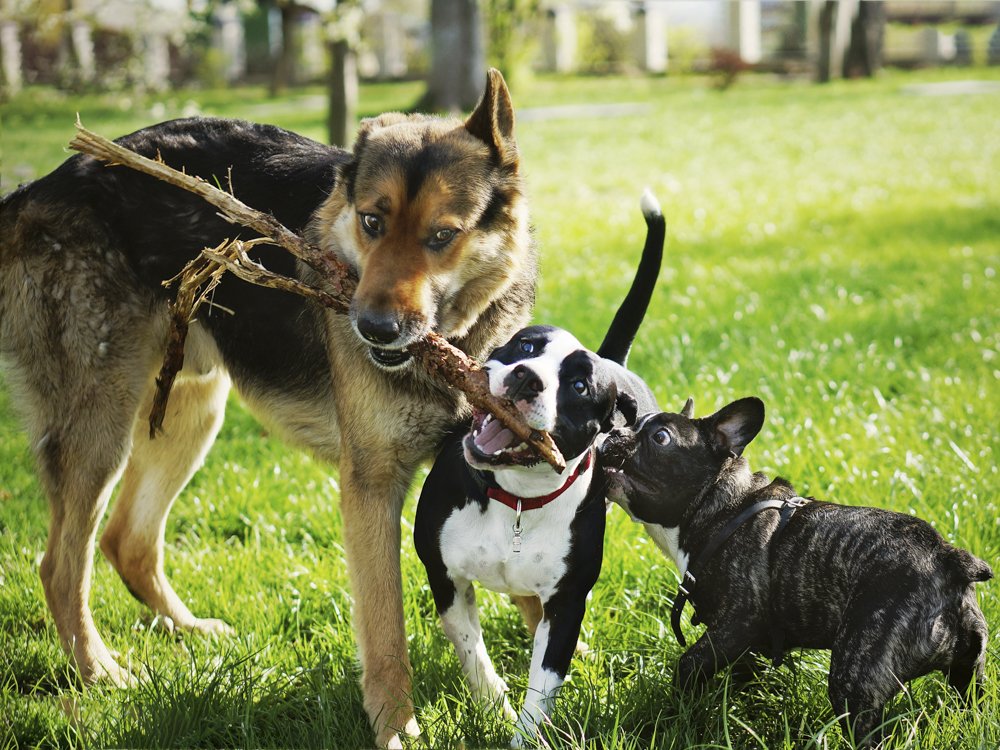Introducing Dogs to Dogs
Many dogs have forgotten or never learned how to properly greet other members of their own species. Dogs are mostly on leashes, behind fences, rushed into greetings by their well-meaning people and kept from situations that would otherwise help them learn canine greeting etiquette. Holding a dog on a tight leash can create frustration when your dog sees other dogs on the street, and that can cause body language in your dog that may look offensive to other dogs. Certain canine behavior, such as pulling on leash, a hard stare and running up to other dogs head-on, can turn greetings sour.
Before you set up a new-dog introduction, consider your own dog’s general attitude toward other dogs. Some dogs are uncomfortable with or reactive to new dogs and need very slow introductions.
First impressions matter, so it’s important to properly introduce your current dog to a new dog. You don’t want to walk a new dog into your home with your current dog waiting inside because your dog will naturally feel that the newcomer is an intruder, not a new friend. Properly introduced dogs are more likely to become buddies and starting them off on the wrong foot could lead to a longer period of letting them acclimate and become comfortable with each other.
If they pull toward each other, stare at each other or are overly excited, you are too close too soon. Put some distance between the dogs and have them just hang out for a bit at that distance before continuing to walk. Use the treats to reward the dog for remaining calm and focusing on you. This gives them something to do while they get used to each other’s presence. Be patient and relaxed so the dogs can relax, too.
At some point, the dogs should become calmer, and you can proceed with your walk. What you are looking for is relaxed and confident behavior. Neither dog should be overly aroused, nervous, stiff or fearful. Keep in mind that it may take more than one walk to see this relaxed behavior.
If the dogs do not seem able to relax and be friendly, it might be best to separate them, putting them in different rooms or crates (out of eyesight) while they settle. If they are relaxed and politely interested in each other, go ahead and let them get close enough to sniff each other. As they sniff, watch their body language carefully.
Warning signs include stiffening, low growling, avoidance or hard stares. If you see these behaviors, calmly move the dogs away from each other. Remember, some dogs do not like the company of other dogs, and they should never be forced into a greeting. Some dogs may need more time or a few more introductions to get used to another dog.
If the dogs remain relaxed and pleasantly interested in each other, one or both of them may gesture to play. Keep the leashes loose and let them interact on leash for a bit to make sure all goes well.
Letting them play:
Watch the play for a while to be sure the dogs are minding their manners: no rude behavior or pushy mounting behavior allowed initially. Every few minutes, before the dogs reach a state of high arousal or over-excitement, stop the play and get the dogs calm again or walk them. Then let the play resume. Always end the play on a good note; do not let them play into crankiness. With you giving them guidance and direction, the dogs will get to know each other and will hopefully build a trusting bond.
The next step, after they have successfully played for some time, is to bring both dogs into your house or yard.



